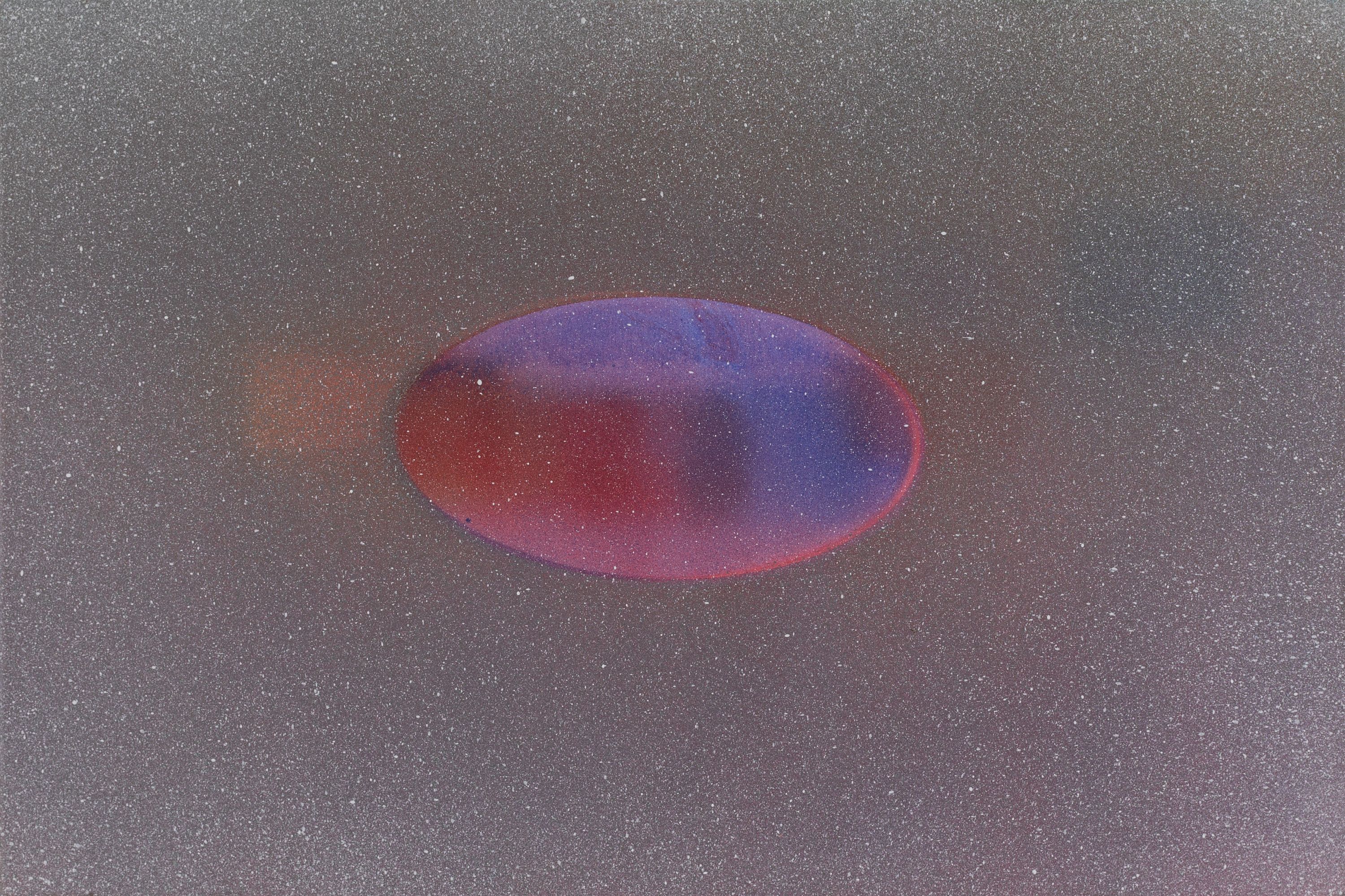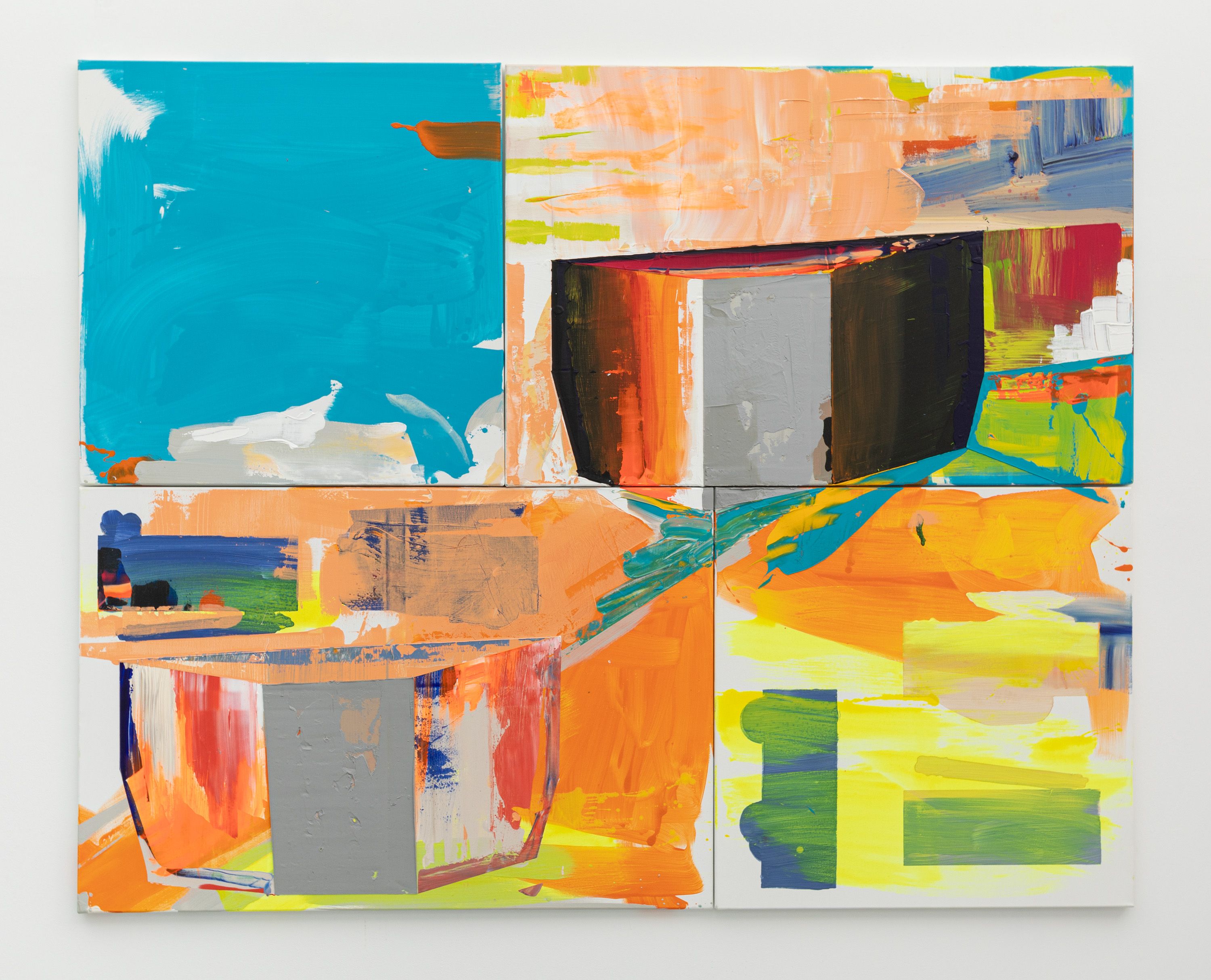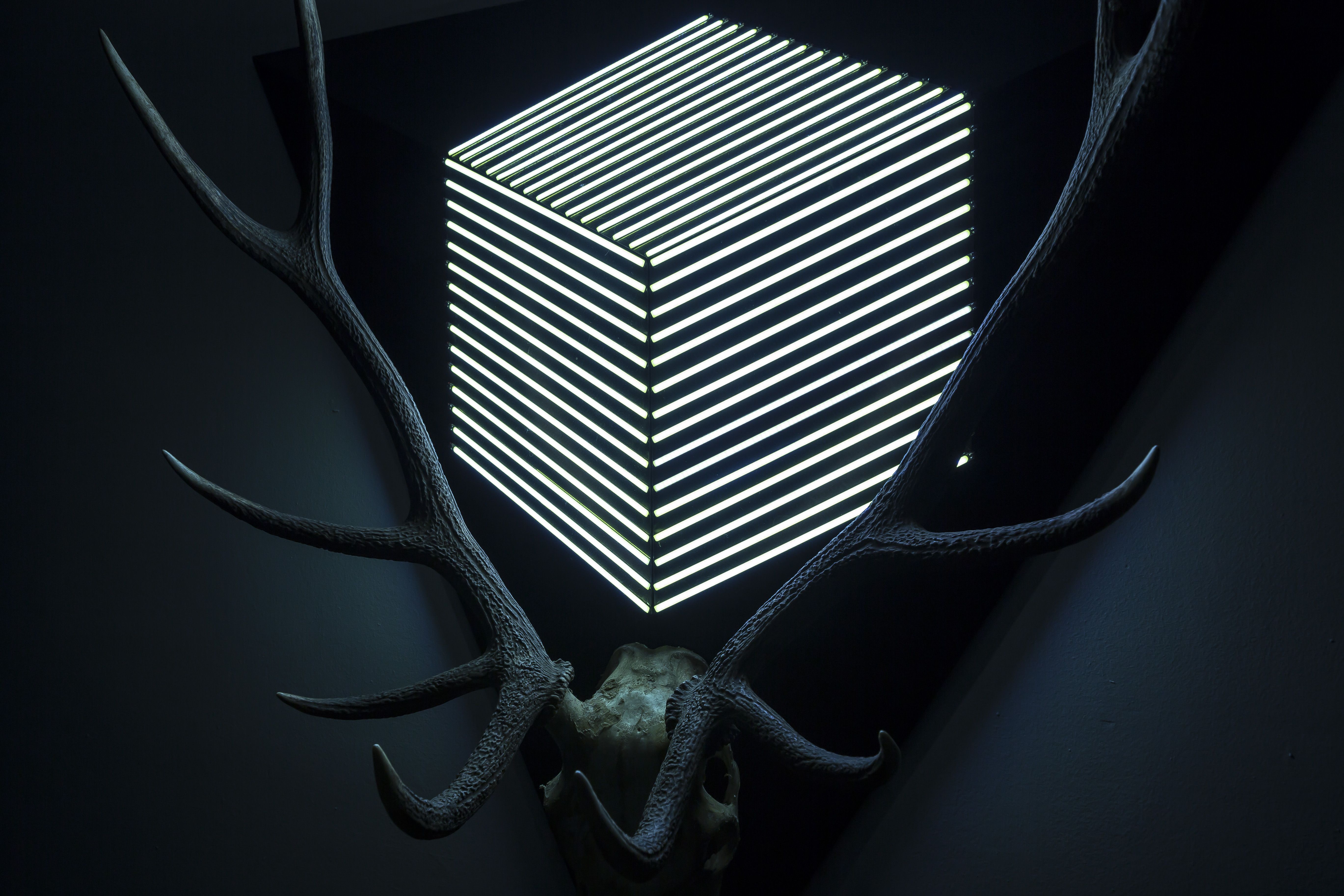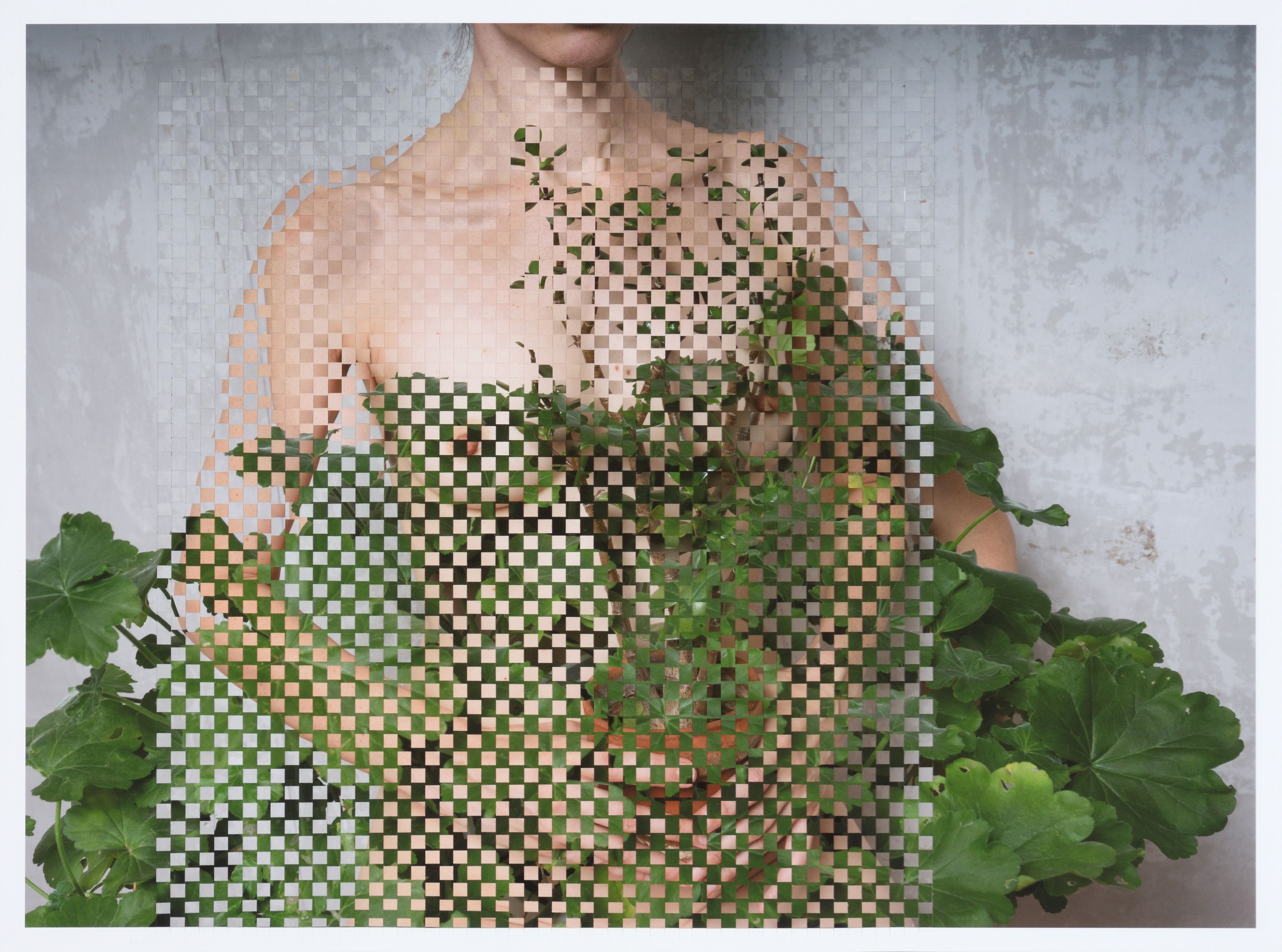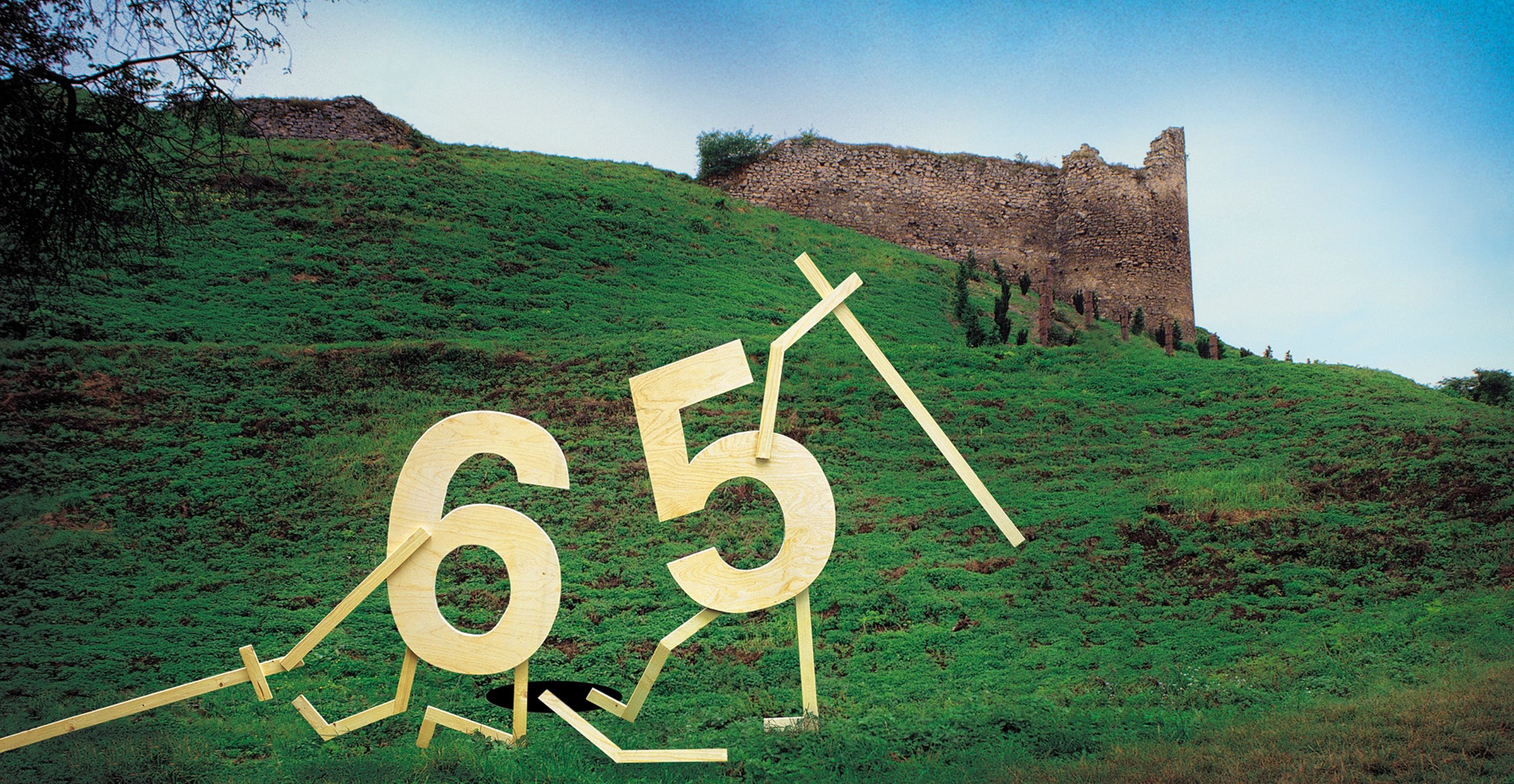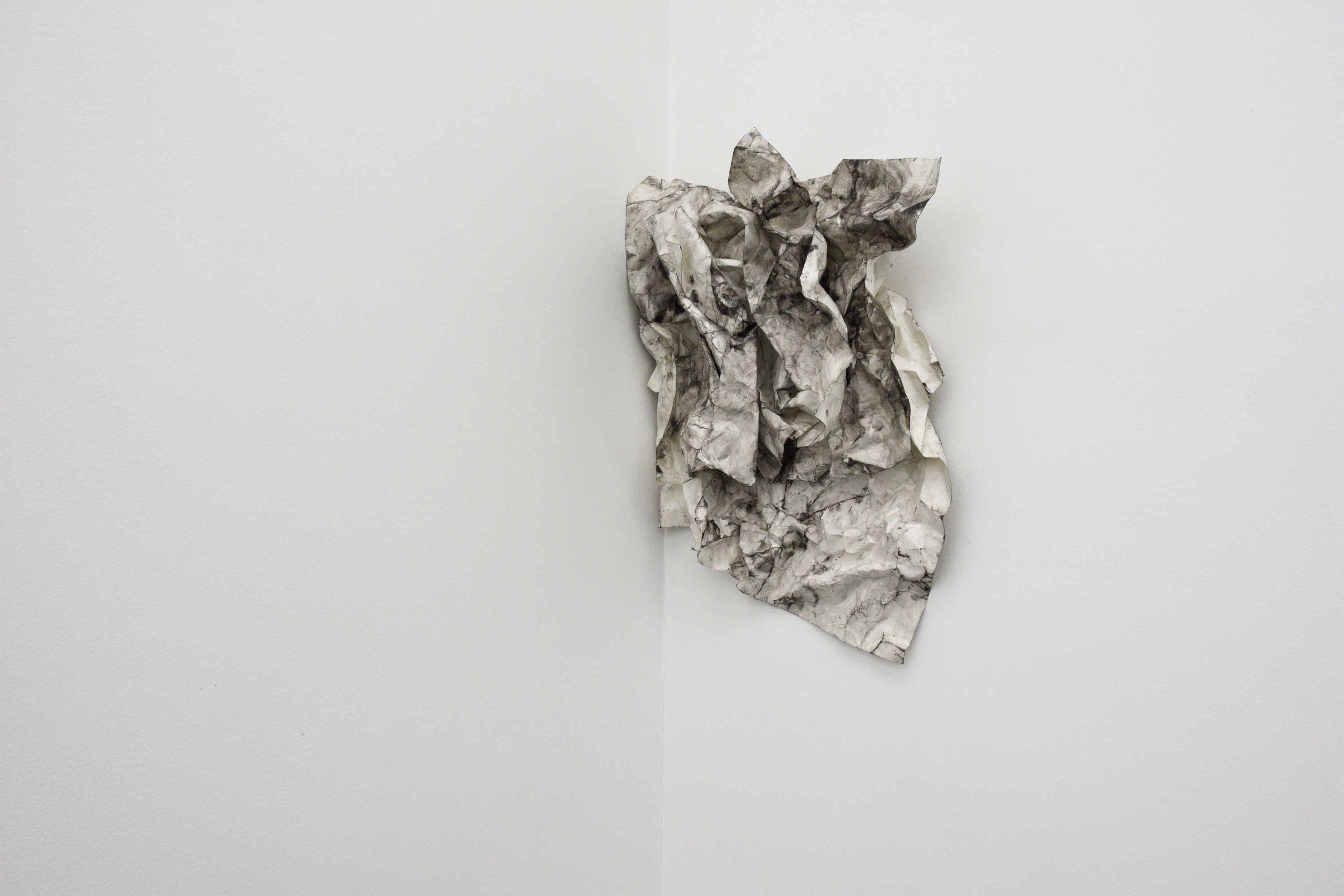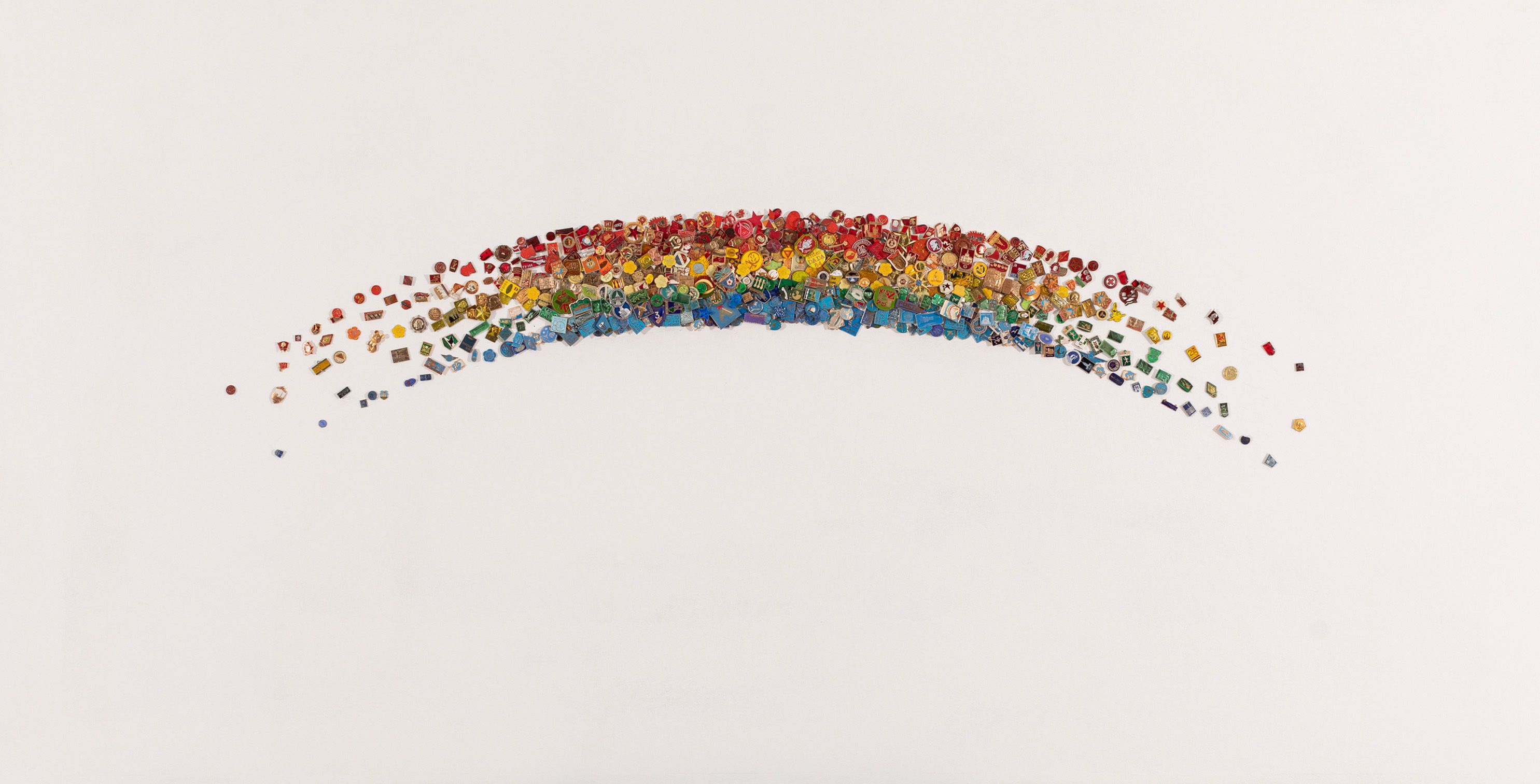Summer Show
| Venue: | acb Gallery |
| Date: | Jul 07 – Aug 03, 2017 |
Description
The main organising principle of Imre Bak’s latest series is the painted frame. Cut at a 45 degree angle, one of the stripes in the bicolour band resembling a meander or labyrinth reminiscent of the artist’s work from the early 1980s, present in each painting of the series, endows the images with a depth evoking axonometric three-dimensional rendering, further reinforced by rectangles of different colour intensity. As Dávid Fehér also points out in his analysis of the series, the paintings depicting relations of light and space inquire into the relation of representation and abstraction.
Róbert Batykó’s presented work is piece from his Error-series started in 2016. As his point of departure for the paintings in the series he uses image errors appearing on different digital interfaces, where the screen displays a randomly fragmented version of the original digital image that should be displayed. These works are made with a technique recently developed by Batykó, in the course of which he applies the paint onto the canvas in a single layer, then using a device, he chafes the still wet layer of paint off the canvas’ surface. The surface of the paintings thus created shows no sign of the paint’s texture or brush strokes, yielding a printed effect. However, the chafing procedure generates unpredictable errors arising from creases in the canvas, counterpointing the print-like effect with their randomness.
Ferenc Gróf’s piece is part of a series that takes dictionary definitions as its point of departure. The text in the piece features only the description and not the original word, coupled with a drawing similar to illustrations in lexicons. The subject of the picture thus created is the relation between text and image, without any actual connection to the original word. The method used in the series Definitions analyses the meaning in terms of the relation of image and text by the most minimal means, while its choice of topic and mode of presentation feature a critical approach to post-conceptual art. The exhibited piece from the series poses questions regarding abstraction, in dialogue with the other works on show at acb Attachment.
As a continuation of his recent work reflecting on the paradigm of modernist art, Péter Tamás Halász has taken a painting from an early stage of his painting career and using the device of renewal, widespread nowadays primarily in the field of technology, he implanted it among his current works. The painting-object of two parts critically addresses the traditional panel painting format and the Malevichean tradition of Suprematism: by turning the canvas perpendicularly into the space and putting the stretcher bar forming the „invisible structure” of the painting on display, he shifts emphasis from spiritual iconicity to construction and functionality.
Tamás Komoróczky’s exhibited work – just like his earlier works – is an enigmatic object organised along tuberous points of coagulation and site-specifically created arches and rifts. Komoróczky’s piece can be considered a teaser or prelude to his exhibition opening within the very same walls this September, the ideological and cultural-historical background of which is provided by Jean-Paul Sartre’s essay Being and Nothingness. As the number placed next to the object indicates, the current work process can be interpreted as a crime scene investigation, a dialogical reconstruction juxtaposed to the seminal essay on phenomenology, published seventy years ago.
Hajnalka Tarr is presenting one of her spatial experiments. As a development of the works combining details of real sights with two-dimensional networks, the artist has already taken a leap into the third dimension at the time of her latest solo exhibition (Transitional Space, 2015). This time, however, her spatial structures are not merely three-dimensional protrusions of two-dimensional elements, but they enter into correlation with the events in the image plane as independent spatial constructions. Another novelty in these works is that beyond their quality as autonomous objects, they also serve as scale models of large spatial installations conceived by the artist, which, even if never to be built physically, will be realised in virtual space where they can be perambulated. The background of these works is once again the contradiction between objective reality and its subjective experience, which has intrigued the artist for a long time.
The exhibited painting by Tilo Shulz is the latest in his series of tondos started in 2015. The artist applies many layers of different colours of paint onto the medium-density fibreboard base so that they partially or completely overlap, and subsequently scrapes back the surface in certain parts. The composition of the paintings thus created is shaped by colours showing through one another as well as textural effects arising from differences in the thickness of the coating. In the case of Skin, the white of the surface is created from seven different layers of white coating, resulting in a skin-like organic surface. Beyond the aesthetic effect generated by the technique, part of the artist’s concept is the social purport of the works: just like the overlapping layers of coating applied through a lengthy process of painting and drying can never perfectly block one another out, the phenomena repressed in society or intended to be erased from the past keep coming to the surface as still existing previous layers.
The photograph by Marcell Esterházy exhibited here uses a similar medium as his work ’One Day’ displayed at the 2015 exhibition Meaning. A text carved into a tree, which, instead of disappearing over time, becomes an organic part of the tree. It is incorporated into the bark and defines its growth. The French expression used in roulette marks the end of placing bids, the moment when we have already made the decision but have no clue yet of its outcome.
István Felsmann’s piece is part of a fictitious fashion collection that redesigns the most common pieces of clothing, divesting them of their original functionality or even usability. The currently exhibited piece of the collection aligns with the artist’s Ianus-series, which is a collection of artworks of diverse media, the pieces of which scrutinise the disparities between the Eastern and Western conceptions of art along various aspects.
This new photo series by Gábor Gerhes displays sportsmen – mostly soccer players – in motion. Gerhes used found statuettes as models for the photographs displaying the negative image of figures resembling Greek torsos of sportsmen. Also archaic in its medium – evoking the bromotype technique – the subject and presentation of the work both convey heavy political criticism.
Csaba Kis Róka’s work is a tableau compiled from a series of small paintings, each depicting a particular motif. The continuous reduction present in the artist’s practice for some years now has thus far been most visibly represented in his series of portraits from 2015. In the series of paintings developing the conclusion of that work even further, Kis Róka detaches himself even further from factuality, and the basis for his deformative endeavour are no longer actual, anatomically correct heads and body parts; this time, he disfigures biologically abstracted and already deformed organs.
Katalin Ladik’s piece is the installation-version of the 40-metre long embroidered textile ribbon used in her performance at documenta Athens in May 2017. Based on the figure of Ariadne in Greek mythology, the performance addressed the contradictions and multi-layered nature of the feminine principle and female roles. Symbolising the golden thread leading Theseus out of the Minotur’s labyrinth, the hand-embroidered ribbon is presented at the exhibition as an autonomous installation, reflecting on women’s fate as a memento of the ill-fated princess.
The piece entitled Impaled Mountain is one of a series of land art designs by Erik Mátrai. Works like Touching the Moon or Mirror Plane Touching the Moon were also conceived as part of this series, the pieces of which feature a shift of scale that is simply impossible to carry out for dimensional, technical or financial reasons. However, while planning and drafting, the artist can let his thoughts soar boundlessly. At the same time, the Impaled Mountain refers to a drastic intervention into nature, which would endanger the local or even global ecological equilibrium. In fact, this issue already comes up regarding a number of actualised land art or other large-scale artworks.
The subject of Gábor Roskó’s painting is the collection of ornamental motifs characterising a number of his works, complemented with textual elements. Painted in the typical style of 19th century painted shop signs, the work combines the crossing guns in the centre of the image with symbols familiar from Christian iconography. Also evoking the compositional structure of ornamental folk art, the painting is a perfect example of the enigmatic ambivalence characterising Roskó.
The key to Péter Szalay’s work is in the use of materials. The artist made the Yin-Yang symbol of Chinese philosophy from two different types of plasterboard: the pink part is fire resistant and the green is water resistant. Made using simple DIY materials and tools, beyond being an ironic mediatic reflection on the ancient symbol, the piece evokes the millennial artistic practice in which the use of various noble materials had iconographic significance.
Péter Szarka began making three-dimensional works – on the borderline between sculpture and object – in 2016, under the title Global Warming against Cold War. The only direct connection between the pieces of the series is the title, which is the artist’s sceptical answer to the question whether globally surfacing problems can be solved by economic and political means. The subtitle of Szarka’s exhibited work alludes to the medieval English philosopher William Ockham’s principle, according to which out of two equally valid explanations describing any given phenomenon, the simpler one should be selected. The piece is an assemblage comprising the technical paraphrase of found objects and DIY 3D printing; the shapes and objects appearing in it are references to the principles expressed by the title and the subtitle.
Recently, Csaba Uglár has been painting on pages from the catalogue of the Phillips auction house. The catalogue pages feature reproductions of high value artworks by superstars of the international art scene, including their technical parameters and estimated value. Uglár’s painterly interventions augment the original reproductions, apostrophising or reinterpreting the presented works. The artist’s gesture is an acerbic critique of the extremities of the art market, with special regard to the fact that in his case, the choice of medium also stems from his precarious situation.
Gyula Várnai’s object is a scale model of the artist’s installation of the same title, exhibited at the current Venice Biennale. The piece depicting a slice of the former ferris wheel of 12 cabins, also represented in other works by Várnai, is part of a project that explores the utopias of previous ages and invokes the science of futurology: in this context, referring to a 5-minute slice from the dial of the clock, it is a symbol of prognostications about the future of humanity. Taking the work out of this context, however, a more general scope of interpretation opens up, wherein besides the physical and philosophical approach to time, cyclicity as a feature of countless processes taking place on micro- and macro-levels – from the cellular functioning of the body to the course of history – is also thematised.
János Vető’s new series is the central piece in a three-phase work. The pieces of this work’s „second movement” feature the photographs of the first phase combined with the genre of painting – augmenting, over- and rewriting the orignal images. The third phase of the work is composed of photographic reproductions of the „Second Movement”. The series reflects on the medium of photography in three movements: its relation to reality and the representations of that, as well as the new quality created by technical damage.


